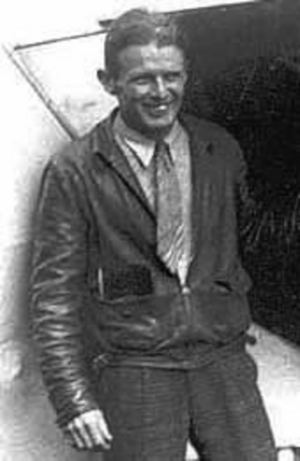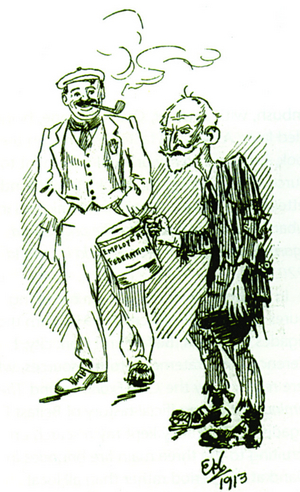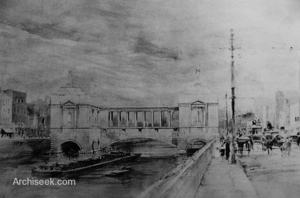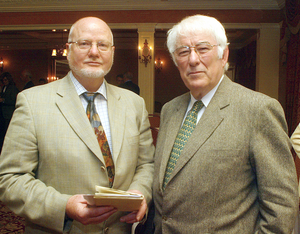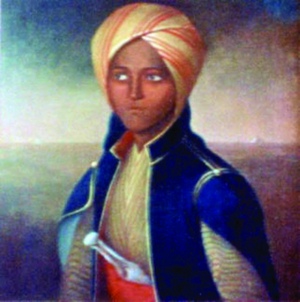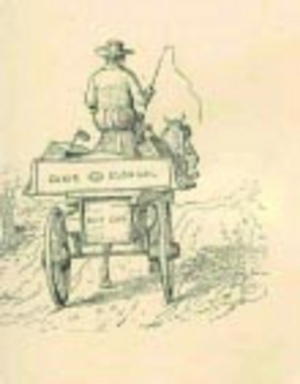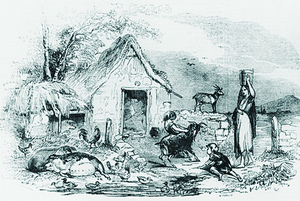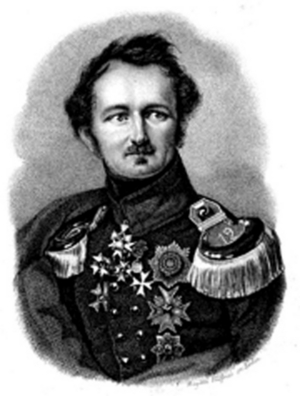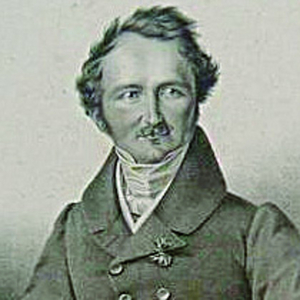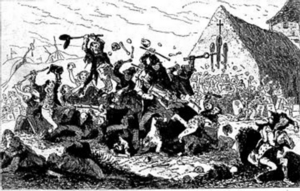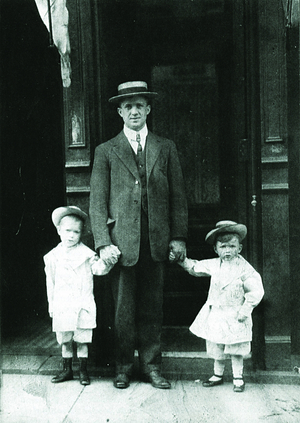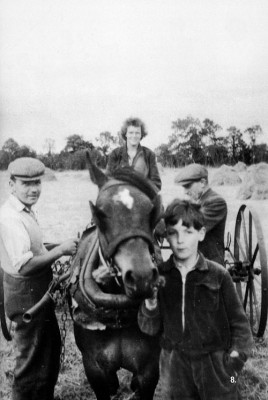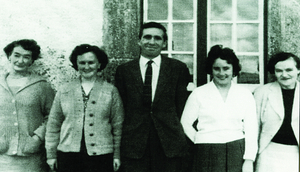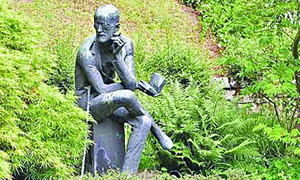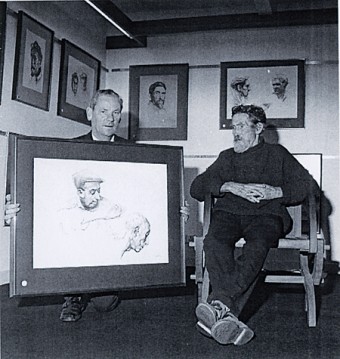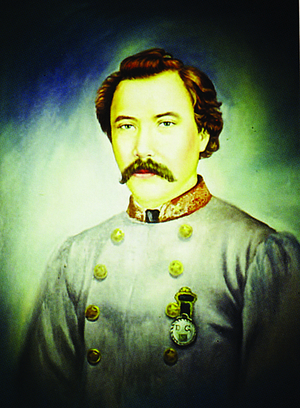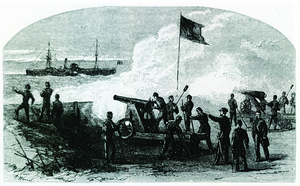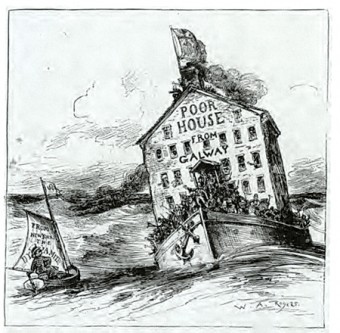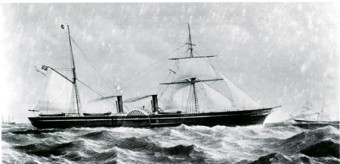Wrong-way Corrigan and other wonders
Thu, Sep 26, 2013
Early morning July 17 1938, Douglas Corrigan, a young aviator, climbed into a small and rather battered nine-year old Curtiss Robin monoplane, at Brooklyn airfield New York. He was cleared to fly to California. It was a misty overcast morning. Instead of turning east, he headed out over the Atlantic. Twenty-eight hours later, surviving on two chocolate bars, two boxes of fig bars, and a few gallons of water, he landed in Baldonnel airport, Dublin, to everyone’s amazement. He was immediately christened ‘Wrong Way’ Corrigan, and the world press loved him. The New York Post printed its headline back to front to join in the fun. Especially as it emerged that Corrigan’s plane had many modifications made to it, including two large petrol tanks strapped in front of the cockpit, allowing him to only see out sideways. One of the tanks leaked on the way over. He had to slash a hole in the floor to allow the fuel out.
Read more ...A ‘fumble in a greasy till...’
Thu, Sep 19, 2013
‘The proposal to build an art gallery over the River Liffey to house the donation to Dublin of Sir Hugh Lane's art collection has been strongly criticised by the businessman and newspaper proprietor, William Martin Murphy.
Read more ...‘Ashamed, as one often is, of Dublin’
Thu, Sep 12, 2013
In the closing weeks of the summer of 1913, there was intense activity at Coole Park, the heart of the Celtic Literary Revival. The considerable energies of both Lady Gregory and WB Yeats were fully committed to supporting Gregory’s nephew Hugh Lane, and his quest to establish a municipal gallery of modern art in Dublin.
Read more ...Seamus Heaney’s ‘Postscript’
Thu, Sep 05, 2013
In September 2004 Seamus Heaney opened the Autumn Gathering in Gort, and he read the above poem (which I will conclude in a moment), and told the audience that he was happy to be once again in south Galway. “ To drive across Ireland, east to west, towards Padraic Fallon’s native Galway, is to experience a double sensation of refreshment and déja-vu. The refreshment comes from the big lift of the sky beyond the River Shannon, the déja-vu from entering a landscape which has been familiar for a century as an image of the dream Ireland invented by the Irish Literary Revival.’
Read more ...The Prince finds true love...
Thu, Aug 29, 2013
After his visit to Britain and Ireland, from 1826 -1828, Prince Hermann, Furst Von Puckler-Muskau returned to Germany, and wrote about his travels with great good humour and vigour. His book, Tour of a German Prince (published in 1830, in four volumes), was an instant success. Translated into English the following year it was a best seller, and a topic of conversation, in both England and America.
Read more ...‘ Hey you! Your trumpet must have a dose of the sniffles’
Thu, Aug 22, 2013
Despite the large population just before the Great Famine (estimated to being more than seven million), the mode of transport from town to town remained primitive. The revolutionary canal system, which provided a highly imaginative way of moving heavy cargo and passengers on storm-free waters, was introduced in the late 17th century. If you wanted to travel from Galway to Dublin you either walked or rode to the nearest canal network (probably on the River Shannon), and finished your journey calmly on water.
Read more ...‘ Long life to Napoleon and to Your Honour:’
Thu, Aug 15, 2013
The one thing that distressed Prince Hermann von Puckler-Muskau, during his visit to Galway in the summer of 1828, was that ‘the dirt, the poverty, and the tattered clothing of the common man was beyond belief.’ He finds this hard to accept. He has just come from London, which was then possibly the most prosperous city in Europe, with its great shops, merchandise, theatre, and visitors. After Trafalgar (1805), British ships could sail the seas, and extend its empire unchecked; and after Waterloo (1815), its armies were triumphant and feared.
Read more ...‘It is unfortunately the case that it rains’
Thu, Aug 08, 2013
Most people were unsure how to take the arrival at the Galway Races in 1828 of the handsome Prince Hermann Ludwig Heinrich von Puckler- Muskau. Especially when they heard that he was looking for a wealthy wife.
Read more ...A prince arrives!
Thu, Aug 01, 2013
There was a curious sequel to the story of poor Michael Kelly of Mirehall, Headford, whom I mentioned last week. Kelly, a substantial farmer and horse breeder, won the ‘gentleman’s race’ at Galway in 1884. However the stewards refused to give him the trophy claiming he was not a gentleman. Kelly sued, and won his case.
Read more ...A mad time of year in Galway
Thu, Jul 25, 2013
I do not think that it is a coincidence that the famous Galway Races coincide with the ancient festival of Lughnasa, celebrated on Garlic (Garland?) Sunday or, in the west, on the last Sunday in July. Máire Mac Neill, in her epic and scholarly study*, tells us that the date marked the most important farming benchmark of the year, the harvest, and it was robustly honoured. There were many Lughnasa gatherings throughout Ireland. Perhaps the most famous one in Connemara was at Mám Éan in the Maamturk mountains. People would camp out for days, musicians and hawkers would entertain the crowds; but the main event was a massive faction fight often resulting in serious injury or death.
Read more ...‘ Killimor - that dear old spot’
Thu, Jul 04, 2013
They are going, going, going from the valleys and the hills,
Read more ...Lark Rise at Killimor
Thu, Jun 27, 2013
In the mid 1940s a trilogy of semi-autobiographical novels about the English countryside of north-east Oxfordshire and Buckinghamshire took Britain by storm. They were written by Flora Thompson, who graphically recalled her childhood, and the many characters in her young life, in Lark Rise (1939), Over to Candleford (1941), and Candleford Green (1943). She perfectly identified the period as a pivotal point in rural history; a time when the quiet, close-knit and peaceful rural culture, governed by the seasons, began a transformation. Agricultural mechanisation, better communications and urban expansion, turned a rural idyll into the homogeneity that we generally have today. The books inspired a recent TV series, and were immensely popular. It reminded a new generation what had been lost.
Read more ...‘Heading for more schooling’ in Killimor
Thu, Jun 20, 2013
I will go with my father a-ploughing
To the green field by the sea.
A visit to Fluntern cemetery
Thu, Jun 13, 2013
On a late afternoon last August, my friend John Hill drove me across the city of Zurich, climbing the suburban heights until we stopped at the gates of Fluntern Cemetery. We walked up the last incline to where, among the trees and billard-table lawns, we saw the Joyces’ grave. There was no mistaking it. Just above the grave is the Giacometti-like sculpture of the writer himself, the work of American artist Milton Hebald. There James Joyce sits, in characteristic pose, deep in conversation, head tilted, one leg resting on the other knee, cigarette poised, his slim cane delicately balanced. Someone once remarked that he held his cane like a musical instrument.
Read more ...‘If you want an anti-toxin for humbug, you will get it from the artist’
Thu, Jun 06, 2013
In 1968 Des Kenny, a Galway bookseller, was preparing to open a commercial art gallery in Salthill, the first of its kind outside Dublin. He needed a star artist for its opening night. He made an unusual choice, and invited Seán Keating. Had he invited Keating 30 or 40 years previously he would have invited a giant of his trade. Then Keating was regarded as one of Ireland’s greatest painters who had, in large canvases, mythologised the fighting men of the War of Independence, and the builders and engineers of the great Ardnacrusha project; the harnessing of the Shannon’s energy to power the fledging Irish Free State. In 1968, however, he admitted to Kenny ‘ I am dead as far as the art world is concerned’.
Read more ...Dick Dowling - ‘ warm hearted hero’of Texas
Thu, May 30, 2013
When the smoke cleared at the Sabine Pass on September 8 1863, a narrow channel on the border between Texas and Louisiana, two Union ships, the USS Clifton and the USS Sachem, had their steam engines blown out. They had beached on the shallows, and had signalled their surrender. The remaining invasion fleet, and its 5,000 troops, had made a hasty retreat, giving an incredible victory to the 43 Irishmen at Fort Griffin.
Read more ...The Irish ‘Dockwallopers’ win famous victory for the Confederates
Thu, May 23, 2013
By the late summer of 1861, the city of Houston had become a hive of activity, and excitement. Texas and a further 11 southern states had withdrawn, or seceded, from the United States. Now groups of volunteers crowded into Houston to answer the call to arms. As well as recruitment queues and military bands, there were concerts and parties. Ballrooms were packed. Apparently, southern girls never looked prettier, nor young men handsomer in their new uniforms. There was an air of intense animation, and pride. An officer class quickly emerged, many of them adding personal flourishes to their uniform. The new Confederate ‘Bonnie Blue’ flag was unfurled to cheers and impassioned speeches.
Read more ...From the Tuam workhouse to New Orleans
Thu, May 16, 2013
The contrast between the Tuam workhouse and the vibrant colours, blue skies, and the smell of exotic food of New Orleans in the 1840s could not have been more dramatic. To the eyes, ears and senses of two young Galway children it must have been jaw-dropping.
Read more ...The Irish sang When Johnny Comes Marching Home...*
Thu, May 09, 2013
Stephen Speilberg’s magnificent film Lincoln made it clear that the Northern States of America, the Union, had justice and right on its side, when it came to deal with the cotton-based slave states of the south. Washington had objected to their attempt to enlarge its slave industry further west. Southern states were enraged at this interference. In an appalling miscalculation some states began to leave to Union, set up their own Confederacy (eventually including 11 states), and prepared to fight for its freedom to choose its own destiny.
Read more ...Why not celebrate December 6 as our Independence Day?
Thu, May 02, 2013
I made two mistakes last week. I got my months mixed up. Instead of a period of less than two years from the battle at his home Muintir Eoin in the Maam Valley to when he was appointed Leas Ceann Comhairle (deputy speaker) of the new Irish Dáil, I said it was less than ‘eight months’. Secondly the photograph. An utter mystery! It just appeared from cyber space by magic. No idea where it came from.
Nevertheless, despite these things, there has been a steady flow of e-mails and texts during the past few weeks. Maybe it is the approach of 2016 that has prompted people to take a greater interest in our history, I do not know. But there is a very considerable appetite for events that led up to the birth of our nation.
Read more ...